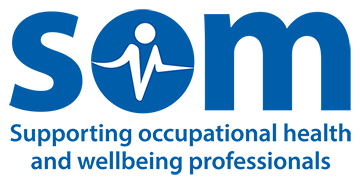
In March 2018, ISO 45001 was released by the International Organization for Standardization (ISO), becoming the internationally recognized requirements for implementing an Occupational Health & Safety Management System (OHSMS) in the workplace. Since companies are already well aware of the value of occupational health, it is expected that they will adopt the new standard and stop using OHSAS 18001 altogether, which will become obsolete in the near future. So, with this new OHSMS standard in mind, let us look at the main elements that drive health & safety in the workplace.
Where does the OHSMS start?
The first key parts of ISO 45001 that drive the OHSMS are the Scope & Policy. The Scope outlines everything that will be included in the boundaries of the management system, and the Policy is the Occupational Health & Safety (OHS) goal that will guide the workforce.
The Policy includes your commitments to provide a safe work environment that prevents injury and ill health, meet legal requirements, eliminate hazards, continually improve and consult with workers. This written policy also gives you a framework for improvement objectives and is shared not only within your organization, but also with other interested parties.
An OHS policy example
Your OHS policy may look something like this:
“The XYZ Company will strive to improve the Occupational Health & Safety of our workers by committing to improvement objectives that will prevent workplace injury and ill health by eliminating workplace hazards and reducing OHS risks. This commitment to continually improve, while meeting all OHS legal and other requirements applicable to our organization, includes the consultation and participation of workers within our organization so that Occupational Health & Safety will become ingrained within all levels of our company.”
ISO 45001 requirements
There are many aspects of the ISO 45001 requirements that, when implemented, become keystones towards meeting the goals you have set out in your OHS policy. Here are some of the most important aspects of ISO 45001 to note, with some highlights of differences between ISO 45001 and OHSAS 18001:
- Leadership commitment – It is no surprise that any management system needs the top management to support it if it is going to succeed. Along with their control of the necessary resources, leaders show workers what is, and is not, acceptable in workplace safety whether they want to or not. Leading by example is critical. The criticality of this activity has increased from the OHSAS 18001 standard.
- Worker consultation and participation – Like top management, everyone needs to be involved in making your workplace safe by identifying hazards and following the OHS rules. Having workers participate in the OHSMS planning and implementation will make it easier to understand what needs to be done to avoid workplace injury and ill health. This is a new requirement that was not in OHSAS 18001.
- Hazard identification and control – Probably the biggest task in the ISO 45001 implementation is to identify all of the OHS hazards that exist in your organization's processes, assess the risk that these hazards pose, and then determine what controls are needed to stop the hazards from causing injury or ill health. Knowing how to identify and classify OHS hazards is the first step in preventing problems, and this is just as important as it was in OHSAS 18001.
- OHS objectives – Setting improvement objectives and planning to achieve them is an important way to ensure that your OHSMS is continually improving in the manner you want. You can focus your improvements towards reducing workplace injury. What is new here is the requirement to create plans to achieve objectives which was not present in OHSAS 18001.
- Operational controls – Focusing your efforts on using controls well can save you time and money, while helping you to manage change. This will include controls for your contractors as well as outsource functions and processes so that everyone who affects your workplace health & safety know what is required. This is expanded from OHSAS 18001.
- Preparing for emergency response – Along with your hazard identification planning, knowing how to be prepared for an OHS incident is critical if you want to save time and reduce impacts. This important function is the same as it was in OHSAS 18001.
- Evaluation tools and actions – There are many evaluation tools in the ISO 45001 standard to let you know what is happening in your OHSMS. These include evaluating your compliance to legal requirements, performing internal audits and management review of the OHSMS. While these requirements were previously in OHSAS 18001, there have been some improvements to ensure that your system remains performing at a beneficial level.
- Systematic corrective actions - To accompany these evaluations, there are requirements for taking corrective action when it is determined that process nonconformities are occurring so that OHS problems can be prevented in the future.
Improving OHSMS performance with ISO 45001
The whole goal of using ISO 45001 to build your OHSMS is to improve the OHS performance in the workplace. This internationally recognized standard gives you the requirements that are agreed as world-class so that you do not miss anything important while you work with everyone within your organization to eliminate OHS hazards, reduce OHS risks, and make your workplace a safer place for everyone in it. For an activity that is this important you don’t want to overlook anything, you owe it to everyone involved.

